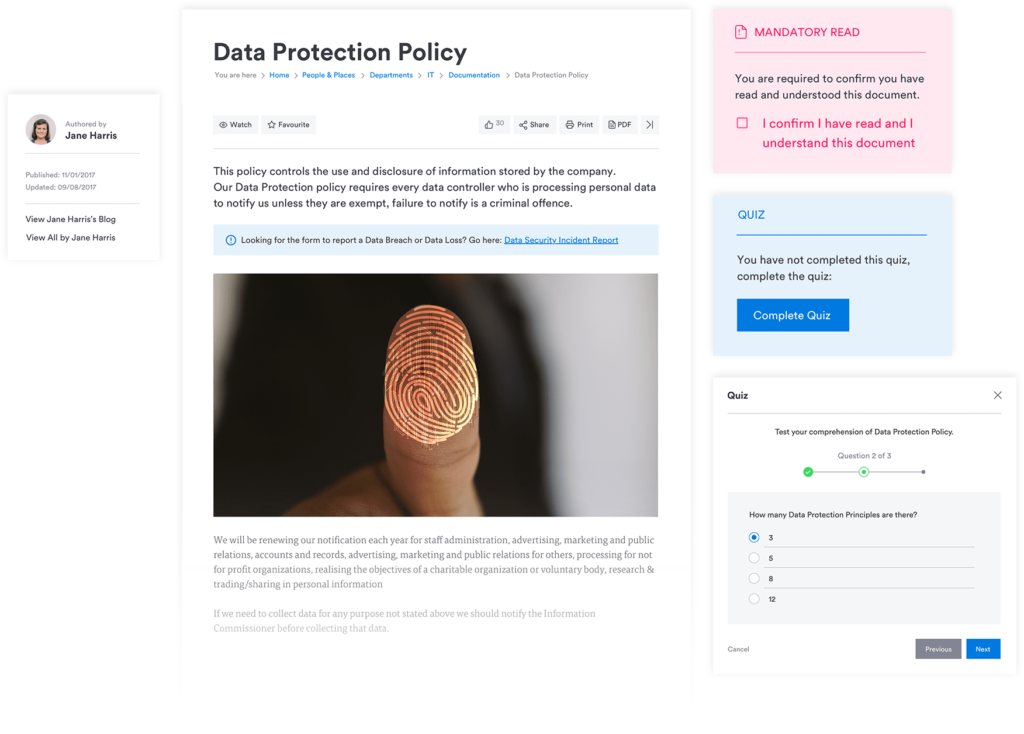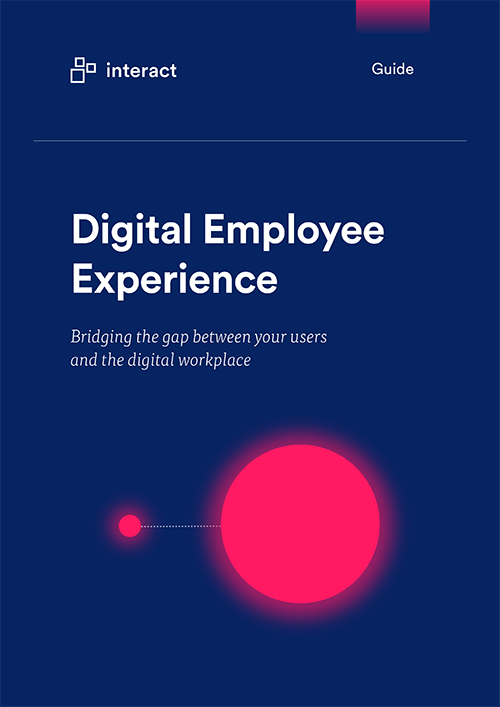How enhanced DEX is business-critical for HR leaders

With digital transformation falling more and more on the shoulders of HR departments, we look at how DEX benefits not only HR, as well as the organization as a whole.
It could be argued that HR was one of the last bastions of the pre-digital age. In the digital transformation of businesses in the past decade, excel spreadsheets continued to form the bedrock of many HR departments across the globe.
However, as businesses evolve, HR leaders have been creating a digital eco-system that has revolutionized the way the department operates: overcoming traditional challenges, automating processes, and ultimately maximizing the digital employee experience.
“Employees want a voice, and HR is an ideal conduit for expanding digital employee experience…. 89% of all respondents say IT and HR could work better together to improve the digital employee experience.”
VMware.com
This has continued to the point that HR is actively working with IT to lead organizations into full digital transformation. With their close working relationship with employees, they are in the ideal position to actively encourage a digital mindset across the workforce: with better processes, more intuitive software, and leading a culture of using the right technology to perform individual roles.
Using digital tools to help payroll, provide benefits, host learning and development, HR are creating a positive digital experience for both themselves and the workforce. This mutual benefit helps encourage employees to approach all aspects of their role in a similar ethos.
Download our guide to the Digital Employee Experience (DEX) today
DEX benefits for HR leaders
So, what are the DEX benefits for HR leaders? The HR department has six key areas that have benefited from digital transformation:
- Recruitment
- Workplace safety
- Employee relations
- Compensation planning
- Labour law compliance
- Training
These six areas are where software can create a great employee experience, both for those operating the systems and for those benefiting from them.
If you consider employee onboarding, for example. This stage, though overlooked by many companies, is an integral part of the employee lifecycle, and has myriad benefits for both employee and organization. However, traditionally, it has added a significant workload to an HR department. How can you operate a successful onboarding process without the usual challenges?

The answer is, of course, through the digital workplace. It’s here where HR can automate processes for the new employer – forms, details, mandatory information, even introductions to the organization. In fact, many of these could be completed in the preboarding stage.
This automation cuts down on time and admin and helps adjust the new starter to a digitalized workplace.
Here we’ll explore the six primary responsibilities of an HR leader and how digital transformation can create a long-lasting DEX that benefits not just the HR department, but the whole organization.
#1 The recruitment process
As we’ve discussed, the automation of a process can ease repetitive, onerous chores; and as any HR professional knows, the recruitment stage has its fair share of these.
A study by Oxford Economics has revealed that the logistical cost of finding and absorbing a new hire, together with the costs of lost output, is a staggering $7,000 per employee on average. To minimize these types of overheads, HR departments need to focus on achieving high quality hires in the most efficient way.

But the emergence of increasingly sophisticated digital tools has transformed modern recruitment. Machine learning is now well-used automation that cuts down the lengthy CV process. Prescriptive analytics should, in theory, mean that those hired are more suited, and more likely to stay long term.
The result is an employee experience that works well for a busy HR department. The combination of digital reputation research, skills assessment tools, and automation means that HR professionals can speed up the recruitment process as well as ensure that the department receives a shortlist of quality hires.
Good digital experience also relies on ready access to the digital tools that employees need to do their job. 73% of employee and HR decision-makers agree that the flexibility of tools that they need to do their work would influence their decision to apply or accept a position at a company.
Download our guide to the Digital Employee Experience (DEX) today
#2 Workplace safety
HR’s responsibility, when it comes to the wellbeing of workers, is to make sure they have a safe environment in which to work. This should be implemented in the hiring and onboarding phases, as well as revisited regularly at all stages of the employee lifecycle.
The digital workplace is the perfect home for workplace safety information, allowing all employees to access one version of the truth on a centralized platform. This information can be amended and updated with alerts being sent to all users of changes.

The digital workplace can also provide a place in which to develop a culture that is committed to wellbeing, physical, and mental health. This area can foster a place to highlight HR’s role as a primary contact to provide the appropriate support for employees.
The result is an employee experience that is both essential for the worker and easier on the HR department. They can identify those employees who need more support and provide the knowledge and resources of workplace safety across the workforce efficiently.
#3 Employee relations and compensation planning
As HR leaders, you are responsible for the collective relationships between employers ad the workforce. This focuses on individual workplace rights, including the working conditions, pay, and benefits – as well as work-life balance, rewards, and recognition.
So, where does the digital experience come into play? HR leaders are now able to run many operations from a centralized platform. It is here that they have an up-to-date profile on all employees and can view their performance, attendance records, and any feedback they may have given.
The digital workplace is integral to the creation, maintenance, and sustaining of cordial, functioning employee relations.
Payroll, for instance, has been digitalized. This not only ensures more accuracy – thus reducing the frustrations of employees and admin workload – but also allows more information to be accessed by the employee, enabling them to go back through past paychecks for reference.

Performance reviews have improved thanks to the digital workplace. With access to big data, management is not only able to view the progress and achievements of individual employees, but also allow them to forecast future requirements, the current wage rates and the financial impacts of increasing payroll on the business.
What is gathered from this is automation, broad access to data, and reduced workload? Employees face fewer frustrations with incorrect figures, departments are more productive, and decision-making becomes informed and accurate. This is a digital experience that is felt throughout the organization and improves overall efficiency and performance.
Download our guide to the Digital Employee Experience (DEX) today
#4 Labor law compliance
All organizations must comply with employment laws, rules, and regulations for their locations. This covers health and safety requirements as well as meeting staff contractual and statutory workplace entitlements. Because of the changing nature of these laws, compliance is an ongoing HR responsibility.
This requires an HR team that is knowledgeable about specific laws and are able to create policies and procedures that align with these laws. Not only that, but HR leaders must be able to communicate and implement these changes throughout the whole of the organization. This can be done through an employee handbook, through training or more effectively through the digital workplace.

It is here where HR teams can quickly amend and update their policies to bring them up to date. They can reach the whole organization, create ‘mandatory reads’ which users must confirm they’ve read, and generate alerts when something that affects the workforce changes.
According to Gartner’s HR practice, the drive to digital transformation, and increased innovation can increase annual revenue by as much as $8,800 per employee.
This creates a digital experience that fosters trust, confidence, and compliance.
#5 Training
HR is responsible for implementing any skills-based learning and development you might have in-house that ensures continuous learning.
The right training strategy can empower staff, as well as become an attractive prospect for candidates in the recruitment process.

e-Learning has changed staff training and allowed more flexibility and greater effectiveness. With e-Learning in your digital workplace, you can adapt and modify training where necessary; it can be carried out in the office, at home, or on the road, and modules can be designed to be consumed in bite-size chunks to fit around busy schedules.
Thanks to the digital workplace, new employees should be able to have access to all data and apps needed from day one. With well-planned infrastructure, all relevant information, useful features, and apps are easy to find and install. This means employees now experience unprecedented ease and agility with workplace training, and invigilators can assess results and track progress in order to make improvements where necessary.

HR can then ensure the continued development of its staff, and employees feel invested and empowered to take their skills further. Adding extra value to the organization, staff churn is reduced according to LinkedIn’s 2018 Workforce Learning Report, where a whopping 93% of employees would stay at a company longer if it invested in their careers.
It’s clear that technology can improve the way we work. But as the workplace evolves, HR is now expected to lead the digital transformation on behalf of the organization. While HR is in a good position to push and promote digital tools in the workforce, many departments will suffer from adapting so quickly.
What organizations need to focus on is a level-headed approach to transformation. The market for HR technology is buoyant, and not every product is suitable for every business. By concentrating on strategy, testing, and steady roll-out, organizations can make sure they achieve successful digitalization and transformative digital experience, without making costly mistakes.

